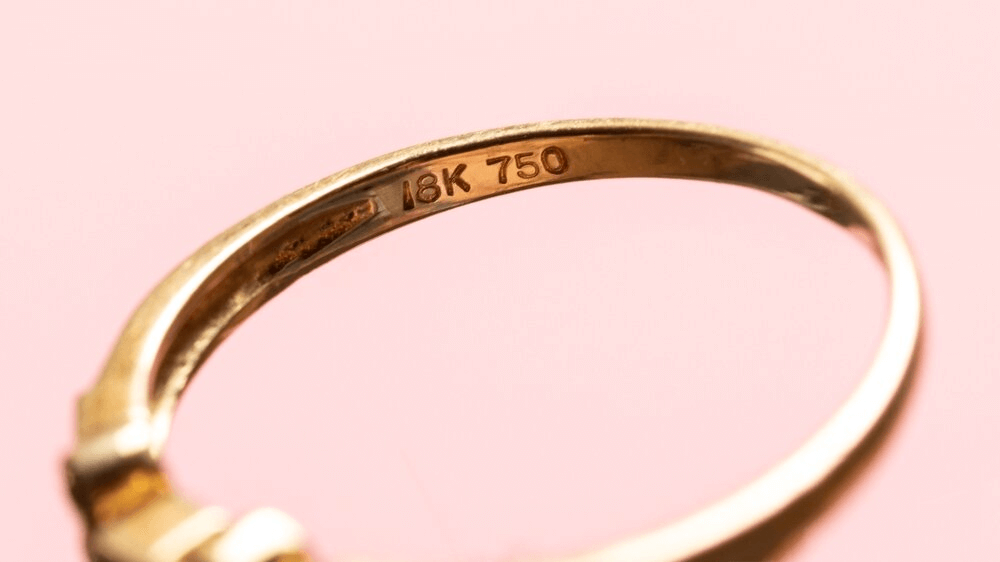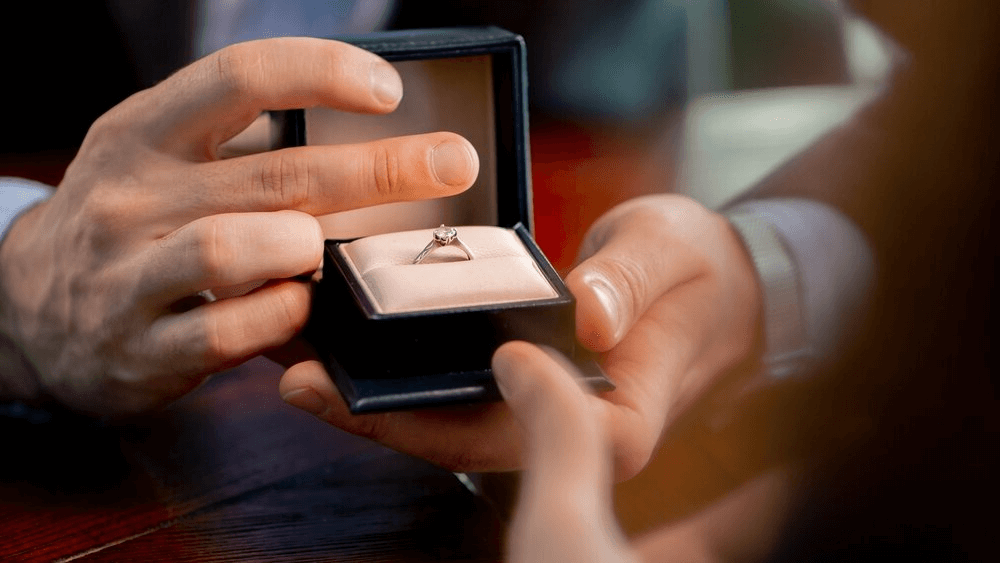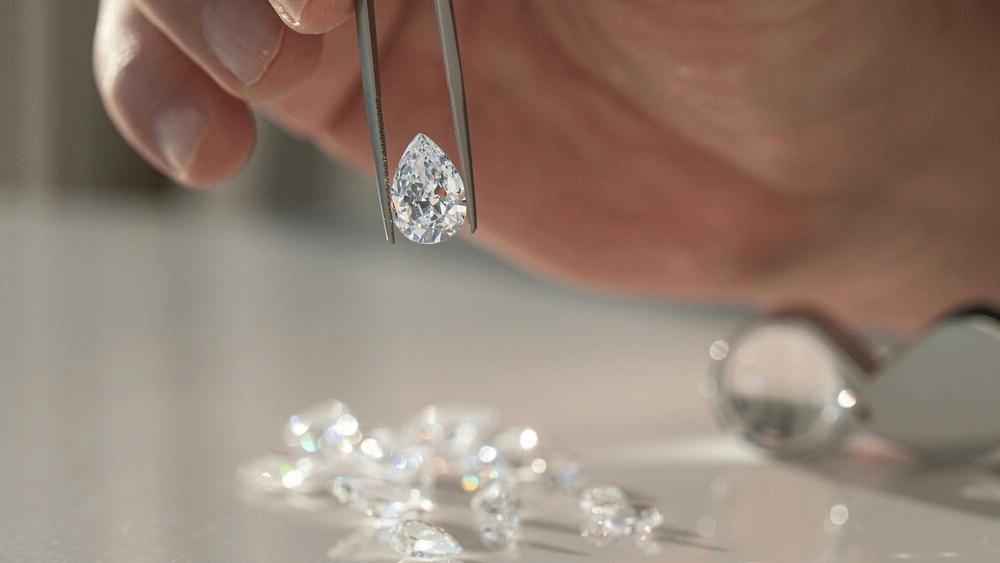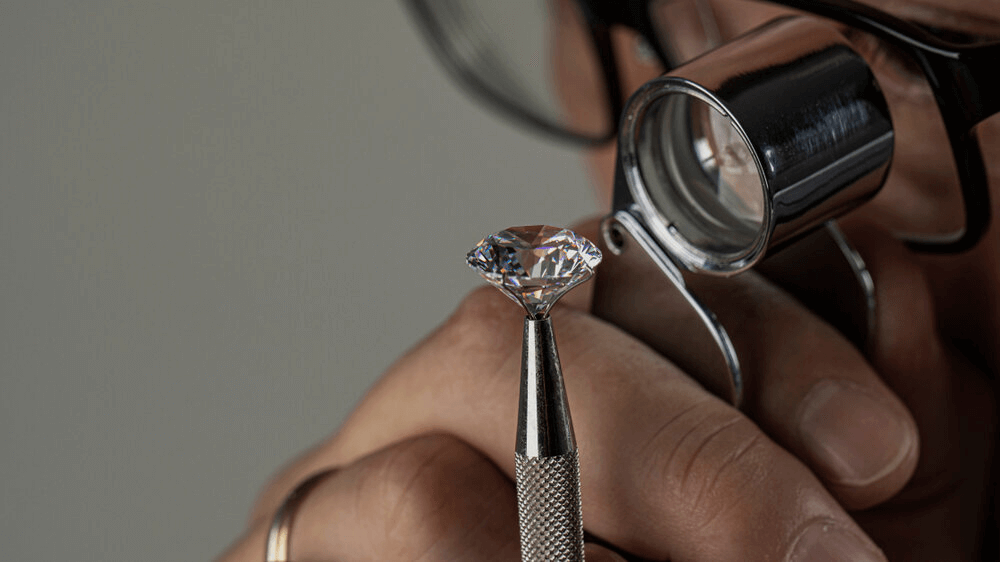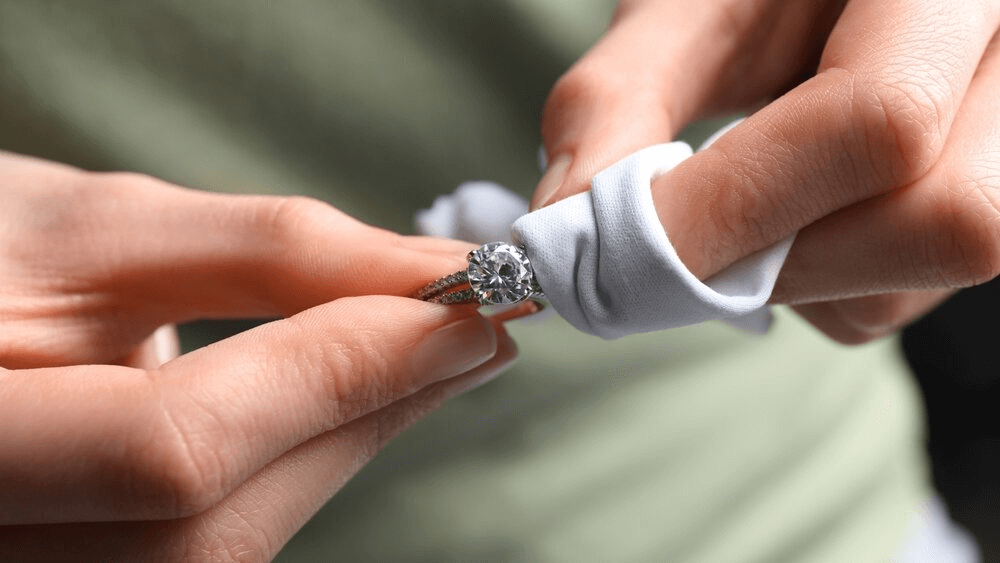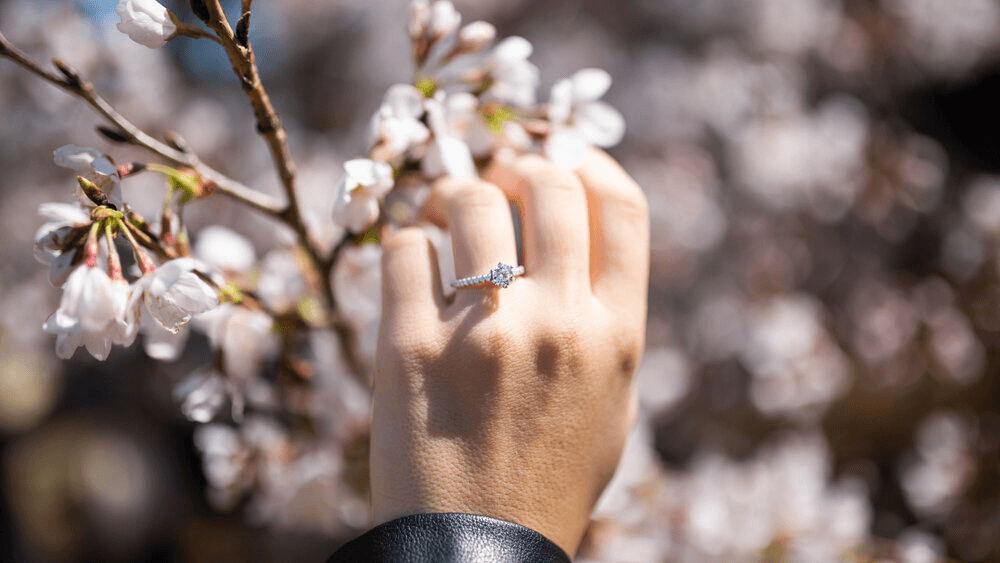Diamond Ring Appraisal: Find Out if You’re Overpaying!

By Gary A.

Edited by Olivia H.
Published Aug 17, 2021
Edited on Dec 18, 2024
Whether for insurance or resale, getting a professional diamond ring appraisal is essential to understanding its true value and ensuring you’re prepared for whatever the future holds.

- 11 Quick Tips for Examining and Appraising Diamond Engagement Rings
- Introduction
- Understanding the Diamond Engagement Ring Appraisal Process
- Our Expert Take
- 8 FAQs
Before we dive deeper into the specifics, here are some practical tips to help guide your decision-making process:
11 Quick Tips for Examining and Appraising Diamond Engagement Rings
- Tip 1: Understanding the Appraisal Process: Know the Difference Between Appraisal and Market Value Insight: Comprehend that an appraisal value for insurance purposes often differs from the market or resale value. An appraisal reflects the replacement cost, which can be higher than what you might receive if you were to sell the ring.
- Tip 2: Check for Comprehensive Details in the Appraisal Detailing: Ensure the appraisal includes a detailed description of the diamond (cut, color, clarity, carat) and the setting. This detailed report should reflect all aspects that contribute to the ring’s value.
- Tip 3: Verify the Appraiser’s Credentials Credibility: While seeking professional guidance is not suggested, verifying the credentials of the appraiser is crucial. Look for appraisers affiliated with reputable organizations or those who have a strong reputation in the jewelry industry.
- Tip 4: Educate Yourself on the 4Cs Self-Knowledge: Gain a basic understanding of the 4Cs (Cut, Color, Clarity, Carat). This knowledge will help you in assessing the ring’s quality and understanding the appraisal report more effectively.
- Tip 5: Examine the Ring’s Setting and Craftsmanship Observation: Pay attention to the ring’s setting and the craftsmanship. The quality of the metal, the security of the setting, and the overall design can significantly affect the ring’s appraisal value.
- Tip 6: Consider the Ring’s Provenance and Brand Heritage: The brand or the history associated with the ring can impact its appraisal value. Rings from renowned designers or those with historical significance may have higher appraisal values.
- Tip 7: Inspect for Certification and Hallmarks Authentication: Ensure the diamond comes with a certification from a recognized gemological laboratory, like GIA or AGS. This certification is a testament to the diamond’s authenticity and quality. Also, look for hallmarks on the ring that indicate the purity of the metal used.
- Tip 8: Be Aware of the Ring’s Age and Condition: The age and current condition of the ring can significantly influence its appraisal value. Antique or vintage rings might hold more value, but only if they are well-maintained. Check for any signs of wear, damage, or repair work.
- Tip 9: Understand the Impact of Rarity and Uniqueness Unique Value: The rarity of the diamond’s cut, color, or clarity grade, as well as unique design elements of the ring, can enhance its value. Limited edition rings or those with unusual features often fetch a higher appraisal value.
- Tip 10: Analyze Recent Sales of Similar Rings Market Comparison: Research recent sales of similar rings to get an idea of the current market value. This will help you set realistic expectations for the appraisal and understand how your ring compares to others in the market.
- Tip 11: Stay Informed About Current Market Trends Market Awareness: Keeping abreast of current trends in diamond prices and the jewelry market can provide you with a better understanding of the ring’s value during appraisal. This awareness is beneficial, especially in the context of resale value.
Now that you’ve got these practical tips, use Jeweler AI below to find the perfect engagement ring that suits your style and budget:
Introduction
Beyond the beauty, brilliance, and breath-taking appearance of any diamond ring, we need to know something far more pragmatic: its numerical value. Whether for insurance purposes, or for us to know what their resale value might be, this number comprises a large part of what a diamond ring really is.
When it comes to calculating the value of your diamond ring for insurance purposes, getting it professionally appraised is vital. The diamond and the setting both carry separate values, but they need to be calculated together – along with a couple less obvious qualities, such as the ring’s original maker, and the craftsmanship behind any intricate features – in order to create a comprehensive picture for the insurer.
The Purpose of Diamond Appraisals
A diamond appraisal refers to one of a number of processes used to assign value to a diamond ring. The appraiser’s findings will be detailed on an official document, which can be given to an insurer as proof of value.
In the past, it was standard practice for appraisers to inflate the ring’s true value by up to 100%, meaning that the ring’s owner would presume it was worth far more than it really was – and, for insurers, that they were able to charge a premium on insurance policies.
These days, however – and provided you turn to a reputable assurance lab with an accredited appraiser on hand – you’re likely to get a more accurate valuation.
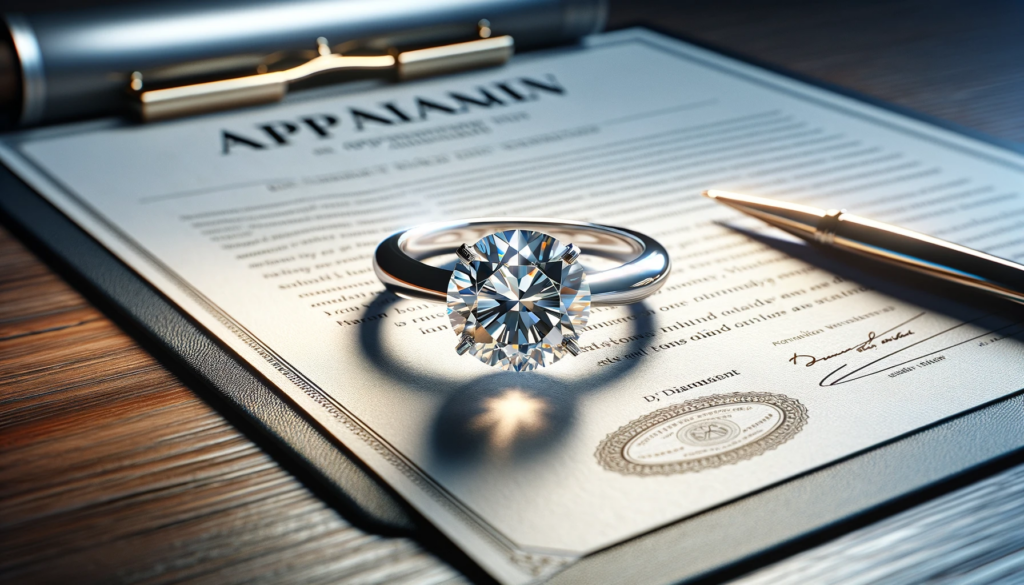
Understanding the Diamond Engagement Ring Appraisal Process
An expert will look closely at the diamond – checking for any inclusions or color, or signs of damage – and the ring itself, to work out a fair value representative of its quality and age.
The diamond will probably be the first thing they look at. The appraiser will want to carefully check the diamond’s cut, clarity, color, and carat weight – just as they did when the diamond was initially sold to you – in order to determine its value separate from the ring.
Similarly, they will appraise the setting – the precious metals used within it, as well as any additional gemstones set around the diamond itself – and, of course, any brand ‘signatures’ engraved onto the inside of the band.
They will then add these two valuations together to create a comprehensive valuation for the entire ring.
Factors Affecting Appraisal Cost
Different assurance labs and jewelers will have their own way of costing appraisals. Diamond rings purchased from WillYou will be accompanied by a professional appraisal from GCAL as standard, so you won’t struggle to get the ring insured quickly.
Some jewelers price their appraisals depending on the value of the ring, but we think it’s best to equip our customers with this vital document from the moment they purchase their ring.
Appraised Value vs. Market Value
Whether you will be able to sell your diamond ring for the appraised value depends on who conducted the appraisal. Some jewelers will still inflate the price or, alternatively, shoot too low as a way of encouraging you to buy from them instead.
The world of fine jewelry is complex, and the average buyer usually has to put a lot of faith into their buyer, since they don’t have decades’ worth of study and experience to support them. As we said, it’s all too easy for someone to inflate (or understate) the results of an appraisal, so only by working with a trustworthy source can you feel sure that the number you’re given is the number you could feasibly get on the secondhand market.
If not, you could find that you’re offered a fraction of what’s printed on your appraisal documents if you ever do decide to sell the ring on.
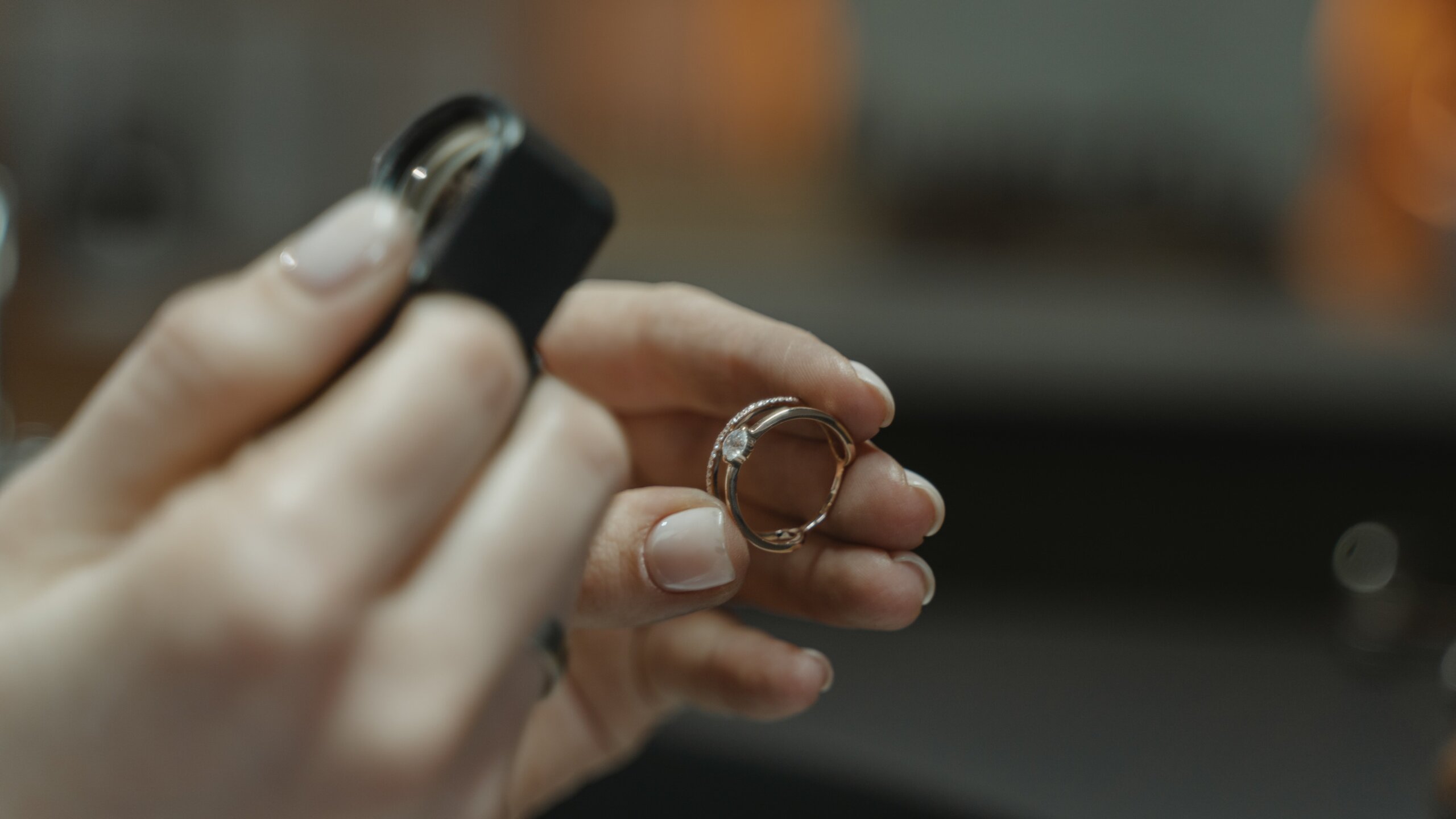
Factors Influencing Resale Value
Diamond rings certainly have a resale value, although this could end up being less than what you paid for it – probably a percentage somewhere below 50%, and maybe as low as 25%.
The exact value of a diamond ring is dependent on a long list of factors, and, as a result, is pretty different to the amount you originally paid for it. That original price will drop after purchase, although diamond’s long-term value will mean that, over the decades, it doesn’t keep dropping.
Diamond rings that were purchased from some of the world’s best engagement ring brands are apt to retain much more value – and to increase over time, provided they are well cared for and still bare the original ‘jeweler’s stamp. There are some horror stories out there from jewelers who have encountered vintage Cartier rings which, due to carelessness during a resizing, have plummeted in value from many thousands of dollars to – another great reason to only shop from reputable sources!
Contrary to popular thought, diamonds themselves don’t often increase in price over the years. The rise of massive online stores using wholesale options for diamonds has altered the entire market, but there will always be value in expertly crafted rings from skilled jewelers.
The Importance of Regular Appraisals
You should get an appraisal every few years, ideally.
There are so many factors that can impact the value of a diamond ring, like the value of diamond and various precious metals, or the value of a particular brand or jeweler. Some insurers will require regular appraisals so that they can adjust your policy accordingly.
Whatever your reason, if you have found a trusted appraiser to work with, we would recommend returning to them each time you wish to update your appraisal, in order to make sure that your results remain consistent.
Differences Between Appraisal and Grading
There are key differences between appraisal and grading. A diamond grading report follows criteria laid out by the GIA and acts as confirmation that a diamond is genuine and that its quality is consistent with what a seller is describing.
Any diamond you consider buying must have a valid GIA diamond grading report, or you can’t be sure it’s the real deal. You can use our GIA Report Check to ensure any report you view is valid, and not fraudulent.
Unlike an appraisal document, a GIA report does not stipulate a price, so you’ll want to have both in your records.
Our Expert Take
Regular diamond appraisals are an important part of owning a diamond ring, even if you never plan on selling it. In fact, appraisal reports shouldn’t be used as a gauge for the diamond engagement ring’s resale value; they’re far more useful for calculating insurance premiums and giving you a good idea of the cost a replacement would incur.
Don’t skip this step – and don’t assume it’s not important just because your diamond ring isn’t worth hundreds of thousands of dollars.
8 FAQs
- Q: What is the main purpose of a diamond ring appraisal?
- A: The primary purpose is to determine the ring’s insurance replacement value, which is the cost to replace the item with one of similar quality and characteristics in case of loss or damage.
- Q: How often should I get my diamond ring appraised?
- A: It’s recommended to have it appraised every two to three years, as the value of diamonds and precious metals can fluctuate over time.
- Q: Can I trust online appraisals for my diamond ring?
- A: While online appraisals can offer convenience, they may not be as accurate as in-person assessments by experienced appraisers. It’s best to have the ring appraised in person.
- Q: What factors affect the appraisal value of a diamond ring?
- A: The appraisal value is influenced by the 4Cs (Cut, Color, Clarity, Carat), the metal of the ring, craftsmanship, brand or designer, and current market trends.
- Q: Should I insure my ring for the appraised value?
- A: Yes, insuring your ring for the appraised value ensures that you’re covered for its replacement cost in the event of loss, theft, or damage.
- Q: Does a higher appraisal value mean a higher resale value?
- A: Not necessarily. The appraisal value often represents the retail replacement cost, which can be higher than the resale value you might receive in the market.
- Q: What documentation do I need for a diamond ring appraisal?
- A: You should provide any previous appraisal documents, sales receipts, and certification from gemological labs (if available) to the appraiser.
- Q: Is it necessary to get an appraisal for a newly purchased diamond ring?
- A: Yes, getting a new appraisal ensures that the insurance coverage reflects the current market value and any unique characteristics of your ring.
Embark on your journey with Jeweler AI: Navigate the sparkling world of engagement rings to select a piece that will dazzle in its diamond ring appraisal.
FOLLOW-UP GUIDE SERIES







